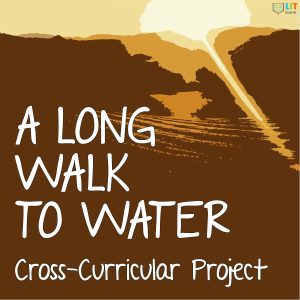
A Meaningful World Water Day Project
On World Water Day, organizations and people across the globe bring attention to the pressing issues of water access, water consumption, and water management. Simply put, water is becoming scarcer, more people lack access to safe water, and the problem is only growing. The UN brings attention to this crisis through World Water Day. And you can do the same through a World Water Day Project. The World Water Day Project is an active, inter-disciplinary inquiry into the daily habits that they might take for granted but that can have a big impact on the environment. Over the span of several days and class periods, students can learn about their own water use habits. Certainly, an investigation worth having.
Part I | Water Survey & Water Tracking
Generate interest in the World Water Day Project by surveying students about their water use. Have them write down all the ways they use water in the day and how much they think they use. After they brainstorm a list of all the ways they use water, have them track their actual water use. Even after estimating the amount of water students consume and use during the day, they will be surprised to discover how much water is truly a part of their lives.
Part II | Water Research & Data Analysis
After students track their water usage, conduct research on how much water daily activities, such as flushing the toilet, use. While these numbers can vary, use averages to help put water use into perspective. When students complete their research, have them calculate their average water use, daily use, and activity use. Create tables, line charts, or pie graphs.
Part III | Mapping Data
In 2016 environmental health specialists from the Milken Institute School of Public Health at the George Washington University conducted a study in developing countries about access to safe water. They found that household members (mostly women and children) walked on average 3.7 miles roundtrip to access and secure 5 gallons of safe drinking water. This shocking find puts the water crisis into perspective. It will also help your students understand it that much more. Using the average distance per gallon (.75 miles), put students into someone else’s shoes by having them map their own walk to water. Based on their water usage, students create a map that tracks how far they would have to walk (one-way or round-trip) to secure the water they need on a daily basis.
 Are you interested in all this impactful project and more? The Long Walk to Water Project Bundle has everything you need to create a meaningful experience for your students. The bundle includes a thought-provoking anticipation activity and informational texts to help students deeply explore water scarcity and water use. While it is supplemental material for the novel, A Long Walk to Water, students do not need to have read the book to take away the core lesson. The water project engages students to think critically about their water consumption habits. Through investigation, data collection, analysis, and reflection, they consider the importance of water and how their own water use may affect the environment.
Are you interested in all this impactful project and more? The Long Walk to Water Project Bundle has everything you need to create a meaningful experience for your students. The bundle includes a thought-provoking anticipation activity and informational texts to help students deeply explore water scarcity and water use. While it is supplemental material for the novel, A Long Walk to Water, students do not need to have read the book to take away the core lesson. The water project engages students to think critically about their water consumption habits. Through investigation, data collection, analysis, and reflection, they consider the importance of water and how their own water use may affect the environment.
More Blog Posts
It’s time for the annual LIT Lessons Novel Study Giveaway! Year-over-year students grow and change, and those changes are often most pronounced when a new school year begins. It’s a fresh start and a restart. The message of Restart by Gordon Korman captures the spirit of new beginnings, evolving identity, and the universal experience of growing older.
Many ELA question stem resources provide vague sentence starters or surface level prompts to encourage students to engage with a text. Oftentimes, these resources lack true depth and rigor, which means students are not being adequately challenged to critically think about a text.
Middle grades historical fiction novels have come a long way from the books available ‘decades’ ago. In fact, this growing genre is now bursting with fantastic, inspiring, and insightful novels. It comes as no surprise that these books are finding their way into middle school ELA curricula…





